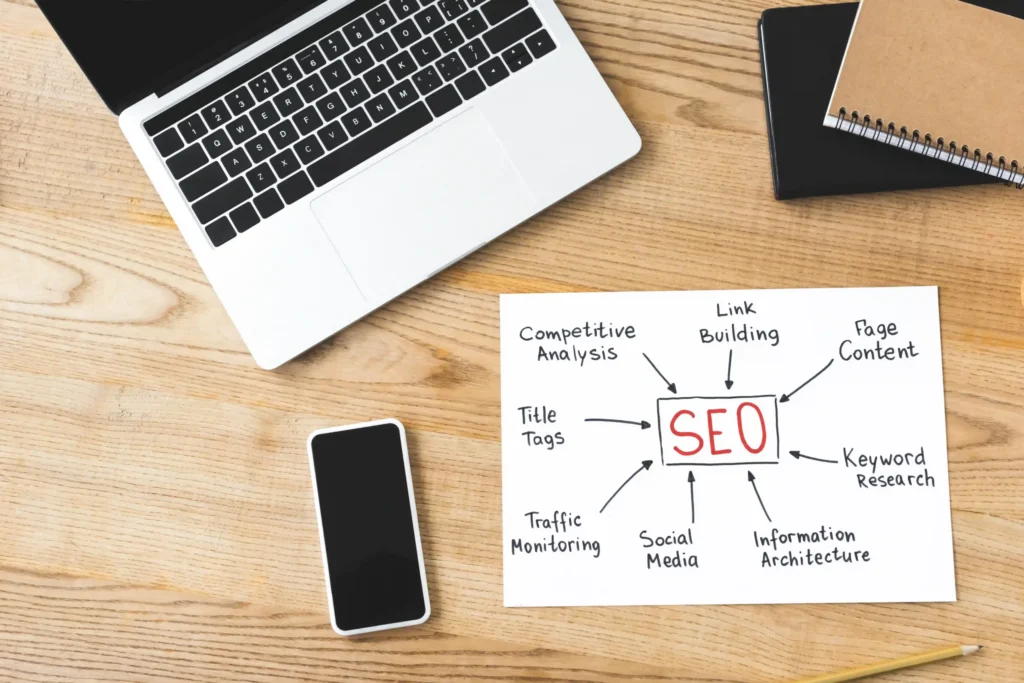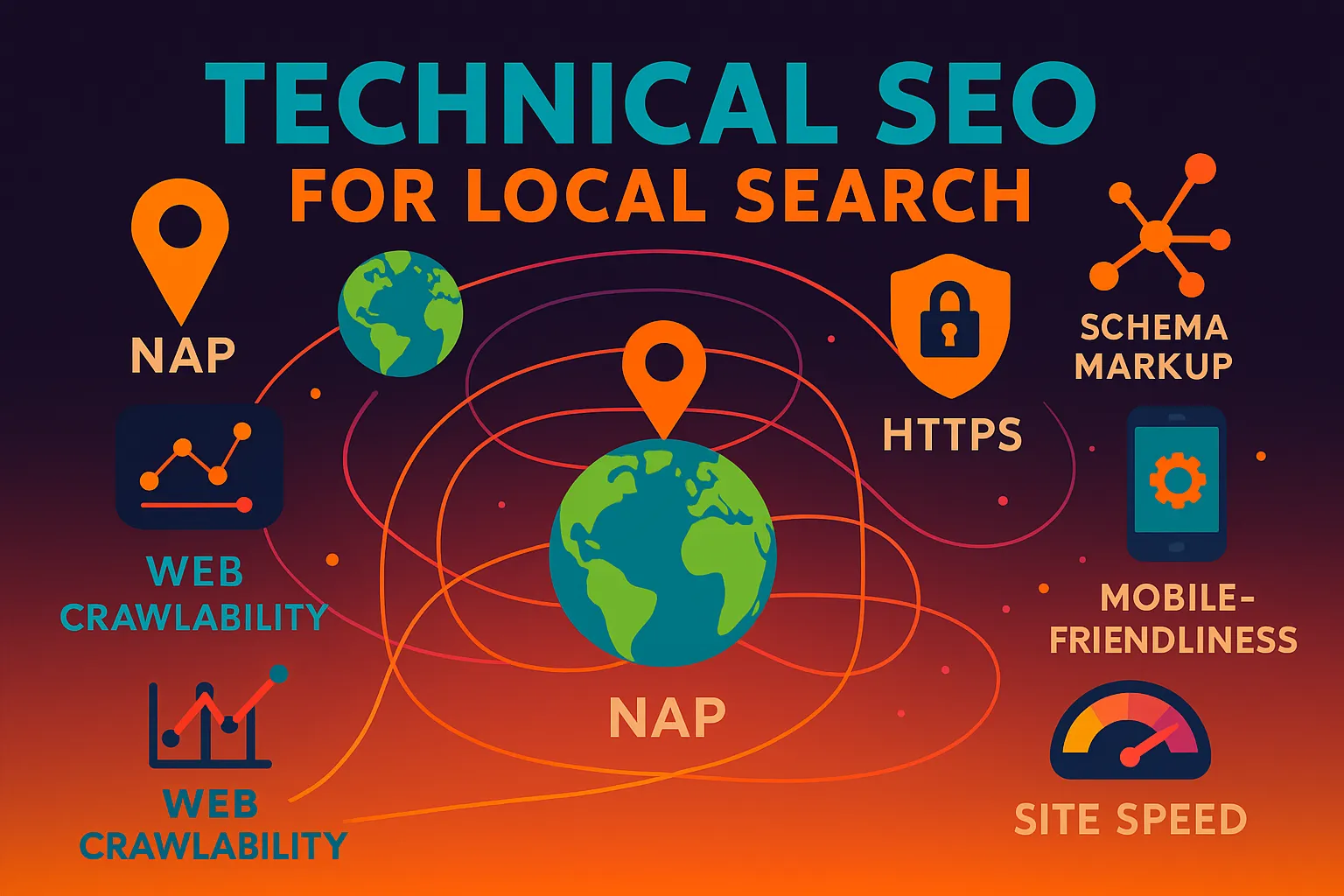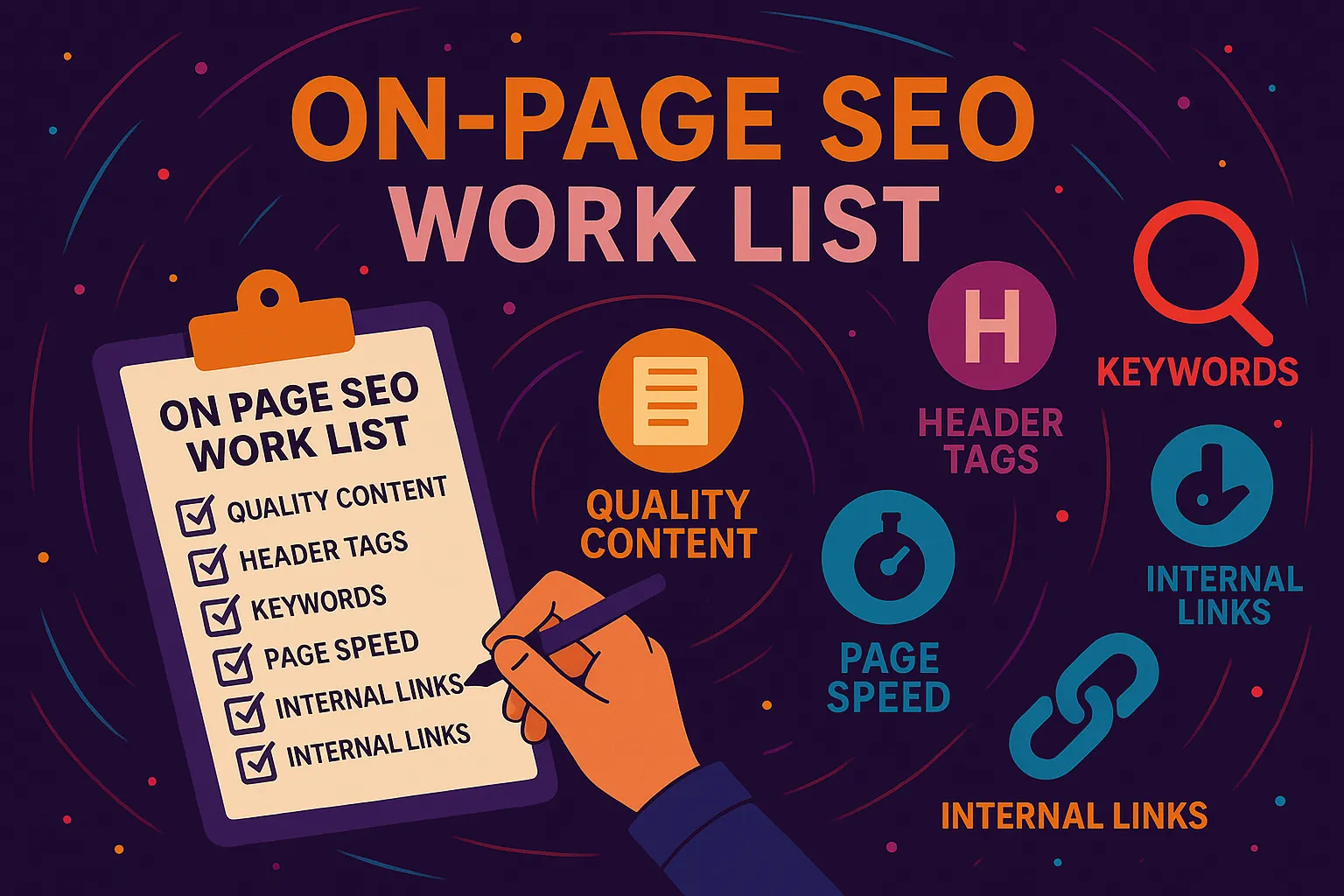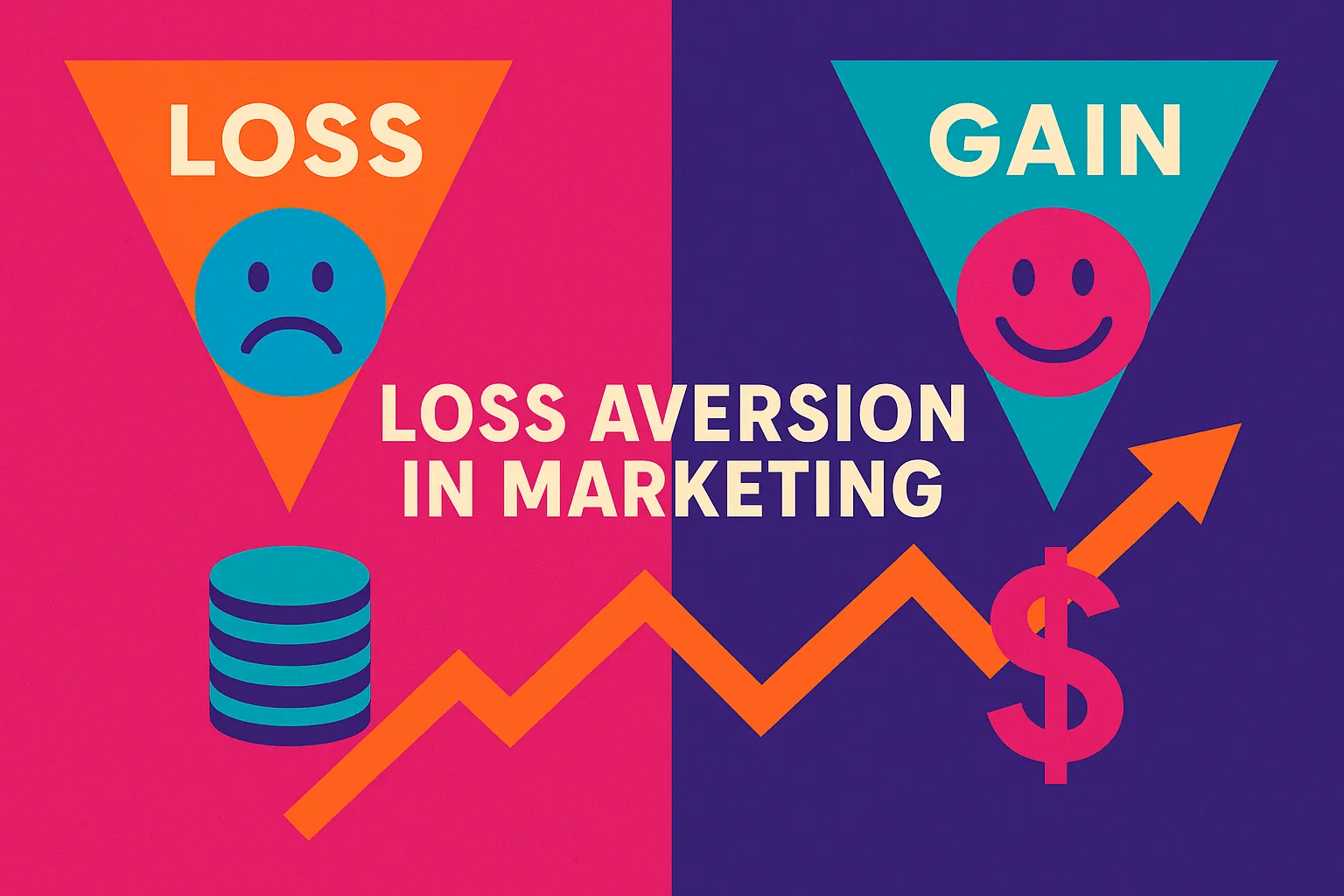What is Technical SEO Local Search?
When we talk about technical SEO local search, we’re referring to the behind-the-scenes optimizations that make your local business website more visible in search engine results. It’s not just about keywords or pretty page design—it’s about ensuring Google can find, read, and trust your website so it shows your business to people in your area.
As the CEO of a digital marketing company that’s spent more than a decade helping local businesses grow, I’ve seen time and again how technical SEO can be the difference between ranking on the first page—or not showing up at all.
TL;DR – What You’ll Learn in This Post:
- Technical SEO is the foundation of successful local search visibility
- We break down how technical SEO helps you show up in the Google Map Pack
- Learn how mobile optimization, site speed, structured data, and crawlability impact your rankings
- Discover the top tools we use to audit and improve technical SEO for local businesses
- Find out what mistakes could be blocking your business from showing up locally
- All advice is backed by 10+ years of digital marketing expertise from the Vibe Branding team
Why Technical SEO Is the Backbone of Local Rankings
Over the years at Vibe Branding, we’ve worked with hundreds of small businesses who had great products, solid services, and even a Google Business Profile—yet they weren’t showing up in local search. Almost every time, the missing link was technical SEO.
Unlike general SEO that focuses on broad visibility, technical SEO for local search is hyper-specific. It ensures your site structure, code, mobile usability, and data tell Google, “Hey, I’m right here and I serve this exact location.”
One example: A local HVAC client in Long Island had fast service and great reviews. But their site loaded slowly, had duplicate title tags, and lacked schema markup.
After we fixed these issues, they moved from page 4 to the top of the map pack for “AC repair near me.” We’ve seen this time and time again.
Fix the technical errors and your visibility skyrockets.

Core Technical SEO Elements That Impact Local Rankings
There are some technical elements every local business must get right. First, crawlability. Google’s bots need to be able to scan your site quickly and completely.
If your robots.txt file blocks key pages or your internal linking is broken, Google may ignore your site. Second, indexability.
We run site:yourdomain.com searches to check how many pages are actually in Google’s index. Often, key local landing pages are missing entirely.
Next is site speed. We aim for load times under 2 seconds.
Every additional second can drop conversion rates by 7%. Google’s Core Web Vitals are now a ranking factor, and we’ve helped clients reduce bounce rates by 25% just by compressing images and cleaning up their code. Then there’s structured data.
We always add LocalBusiness schema, including business name, location, hours, phone number, and geo-coordinates. This helps Google connect your website to your Google Business Profile.
Mobile-friendliness is the final piece. Since most local searches happen on mobile, Google’s mobile-first indexing makes a responsive, clean mobile layout essential.
We use tools like Google’s Mobile-Friendly Test and PageSpeed Insights to audit this.
Technical SEO Element | Why It Matters for Local Search |
Crawlability | Allows search engines to access all pages |
Indexability | Ensures location pages are included in results |
Site Speed | Faster sites rank better & convert more |
Mobile Optimization | Local searches mostly happen on phones |
Structured Data | Helps Google understand your business |
Why Schema Markup Is Your Secret Weapon
When I first learned about schema markup back in 2014, it felt like a secret backdoor into Google’s brain. And now, in 2025, it’s still one of the most overlooked parts of technical SEO for local search.
We make sure all of our local clients use LocalBusiness schema on every service and location page. If you’re not familiar with schema, it’s just structured data—a way to format your business info in code so that Google can read it more clearly.
We use JSON-LD to apply schema for:
- Business name and category
- Address, city, and zip code
- Hours of operation
- Phone number and website
- Geo-coordinates and service area
Adding this markup increases your chances of showing up in Google’s Local Pack and even rich results like “Open now” filters. One of our clients, a dentist in Brooklyn, saw a 38% boost in calls within two months of implementing proper schema.
It’s a small detail that delivers massive ROI.
Common Technical SEO Mistakes That Hurt Local Visibility
Here’s the truth: most local websites we audit have major technical flaws. And these flaws directly block them from ranking.
One of the most common issues is NAP data (name, address, phone number) stored in images. Google can’t read text embedded in pictures.
Your NAP needs to be in crawlable HTML. Another frequent issue?
Redirect errors. We’ve seen businesses that rebranded but didn’t 301 redirect their old URLs.
That’s a red flag to Google, and it often results in broken pages, lost backlinks, and reduced rankings. Also, many local sites use the same meta titles or content across city pages—Google treats this as duplicate content, which hurts your visibility.
Even missing or outdated sitemaps can cause issues. We’ve helped clients clean up their internal links and ensure their XML sitemaps are regularly updated and submitted to Google Search Console.
These are the details that most people ignore—but they’re the exact reasons why some businesses rank while others don’t.

The Right Way to Structure URLs and Internal Links for Local Pages
Multi-location businesses often struggle with URL structure. We’ve seen sites with confusing URLs like /location-1-about-us-service-area-west.
Instead, we recommend clean, consistent structures like /locations/city-name/ or /services/city/service/. This not only improves SEO but also user navigation.
Internal linking is another secret weapon. Each location page should be linked from the homepage and service pages.
We also use breadcrumb trails to help users (and bots) understand the hierarchy. On a technical level, these internal links distribute page authority more evenly across your site.
Think of your website like a map. If important pages don’t have clear paths leading to them, Google won’t know they exist.
At Vibe Branding, we use crawl simulation tools like Screaming Frog and Sitebulb to ensure our clients’ local pages are easily discoverable.
How Mobile Usability Shapes Local Search Success
Let me be blunt—if your site isn’t mobile-friendly, you won’t rank for local searches. That’s how important mobile usability is to technical SEO local search.
People looking for nearby services are almost always on their phones. They’re in a hurry, and they want answers fast.
That means your site needs to load quickly, look clean on a small screen, and make key info—like phone numbers and directions—immediately visible. We worked with a florist in Queens who had a desktop-only site.
looked beautiful on a laptop but was clunky and broken on mobile. After we redesigned it responsively and cleaned up the code, their bounce rate dropped by 43% and mobile orders jumped by 58%.
Google noticed too—the site climbed from position 19 to 3 in less than 6 weeks. These results aren’t unusual.
They’re the norm when mobile optimization is prioritized. That’s why every local SEO audit we do includes mobile UX testing, Core Web Vitals, and speed analysis.
How to Monitor the Impact of Technical SEO on Local Rankings
Making improvements is only half the story. At Vibe Branding, we believe in measurement.
That’s why we always set up systems to monitor how our technical SEO changes affect local rankings. First, we track keyword movement across different cities using tools like BrightLocal and GeoRanker.
We look at where your business appears in the Local Pack, organic listings, and mobile vs. desktop. We also use Google Search Console to monitor how often your local pages appear in search results, which queries they show up for, and how users interact with them.
We watch metrics like click-through rate (CTR), impressions, and crawl errors. When you work with us, you don’t just get technical fixes—you get real-time reports, monthly insights, and a clear view of what’s working.
And if rankings drop, we respond fast. We’ve built our reputation on being proactive, not reactive.
That’s the difference between a marketing agency and a true digital partner.
Final Thoughts on Technical SEO Local Search
Technical SEO might not be flashy, but it’s absolutely essential—especially for local businesses trying to stay visible in a competitive landscape. When done right, technical SEO local search helps your website become faster, clearer, more trustworthy, and more useful in the eyes of both search engines and users.
Whether you’re a plumber, a dentist, a restaurant, or a multi-location brand, the principles are the same: if Google can’t crawl, index, or understand your site, your rankings will suffer. At Vibe Branding, we’ve spent over 10 years perfecting this craft.
We don’t just check boxes. We dig deep, we get our hands dirty in your code, and we help you shine in local search.
And we’re here to do the same for you. If you’re ready to rise in local search rankings and finally tap into the traffic and customers you deserve, let’s talk.





